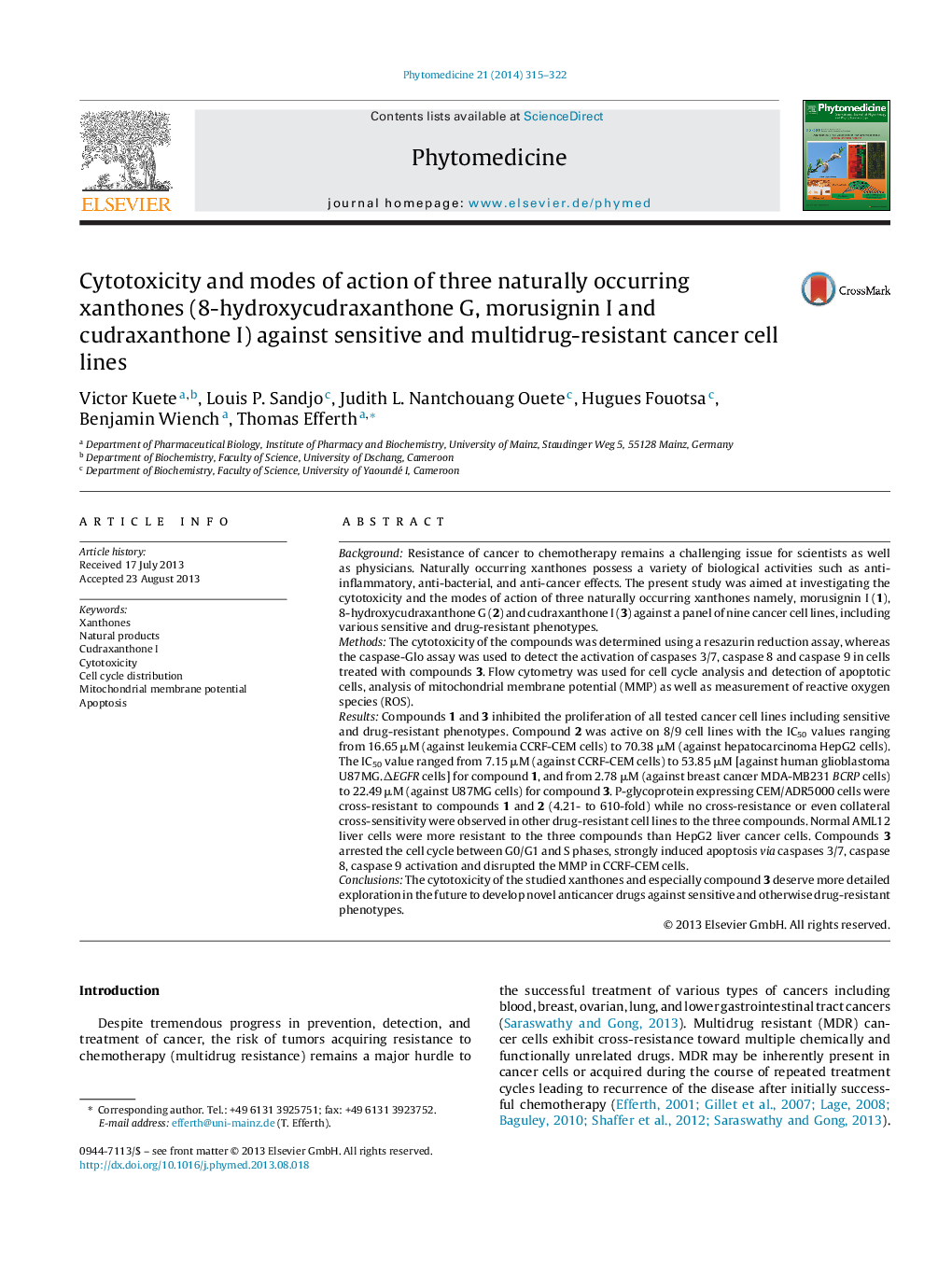| Article ID | Journal | Published Year | Pages | File Type |
|---|---|---|---|---|
| 2496548 | Phytomedicine | 2014 | 8 Pages |
BackgroundResistance of cancer to chemotherapy remains a challenging issue for scientists as well as physicians. Naturally occurring xanthones possess a variety of biological activities such as anti-inflammatory, anti-bacterial, and anti-cancer effects. The present study was aimed at investigating the cytotoxicity and the modes of action of three naturally occurring xanthones namely, morusignin I (1), 8-hydroxycudraxanthone G (2) and cudraxanthone I (3) against a panel of nine cancer cell lines, including various sensitive and drug-resistant phenotypes.MethodsThe cytotoxicity of the compounds was determined using a resazurin reduction assay, whereas the caspase-Glo assay was used to detect the activation of caspases 3/7, caspase 8 and caspase 9 in cells treated with compounds 3. Flow cytometry was used for cell cycle analysis and detection of apoptotic cells, analysis of mitochondrial membrane potential (MMP) as well as measurement of reactive oxygen species (ROS).ResultsCompounds 1 and 3 inhibited the proliferation of all tested cancer cell lines including sensitive and drug-resistant phenotypes. Compound 2 was active on 8/9 cell lines with the IC50 values ranging from 16.65 μM (against leukemia CCRF-CEM cells) to 70.38 μM (against hepatocarcinoma HepG2 cells). The IC50 value ranged from 7.15 μM (against CCRF-CEM cells) to 53.85 μM [against human glioblastoma U87MG.ΔEGFR cells] for compound 1, and from 2.78 μM (against breast cancer MDA-MB231 BCRP cells) to 22.49 μM (against U87MG cells) for compound 3. P-glycoprotein expressing CEM/ADR5000 cells were cross-resistant to compounds 1 and 2 (4.21- to 610-fold) while no cross-resistance or even collateral cross-sensitivity were observed in other drug-resistant cell lines to the three compounds. Normal AML12 liver cells were more resistant to the three compounds than HepG2 liver cancer cells. Compounds 3 arrested the cell cycle between G0/G1 and S phases, strongly induced apoptosis via caspases 3/7, caspase 8, caspase 9 activation and disrupted the MMP in CCRF-CEM cells.ConclusionsThe cytotoxicity of the studied xanthones and especially compound 3 deserve more detailed exploration in the future to develop novel anticancer drugs against sensitive and otherwise drug-resistant phenotypes.
